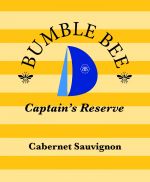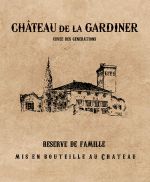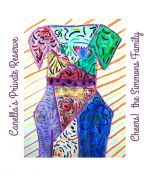
Winter is still holding, we’re reading, staring at our devices, watching TV, waiting for the days to get longer and, maybe, just quietly sipping a little after dinner port to get us through the long dark evenings.
Rather rich and supple, stronger than our usual wine, and more warming. What more do we know about port? Well, it’s a fortified wine. But why is it fortified and when is it fortified and who started all this? Ah… another chance to journey through the world of wine.
Port is rather a British phenomenon, not Portuguese even though port is from Portugal. Because the Brits loved their wine starting way back, and they did not have the climate for growing proper wine grapes (their climate is very much like ours here in western Washington!) they imported it from France. But, as things go, there were some irritating wars between Britain and France in the 17th and 18th centuries that interfered with getting wine from that country. Indeed, Great Britain began boycotting wines from France. Oh, but they had a mighty thirst! What to do? They looked elsewhere and Portugal seemed likely, but unfortunately, at that time Portuguese wines couldn’t survive the long sea journey to England. So the British began experimenting with adding brandy to still red wines fortifying them and thereby stabilizing them for the extended voyage across the Bay of Biscay and up the coast of France. (I can just picture them thumbing their noses as they passed by the offending country.) There are some stories about how they discovered this process, but the upshot is that, it worked and gradually it became the thing. And what a grand historical thing it turned out to be! The British created companies, bought vineyards and set about creating a tradition that is still thriving to this day. And that is also why so many port brands that we are familiar with have decidedly English names.
Let’s look at where it all begins. Port originated in the Douro Valley in northern Portugal. The Douro Valley was established, defined, and protected as a DOC (Denominação de Origem Controlada) in 1756 making it one of the oldest appellations in the world. And while there are over 100 grapes approved for making port, the five red grapes that dominate are Tinta Barroca, Tinto Cão, Tinta Roriz (tempranillo), Touriga Francesa and Touriga Nacional. (By the way, there are white ports too, made from another group of unheard of, and difficult to pronounce, grapes. Look them up. I have my hands full here.) The name derives from the city of Oporto from where the wines are shipped. The best ports come from here and are labeled Porto or Oporto. And, in the EU, like Champagne, the term “Porto” and “Oporto” can only be used on port from Oporto. There should be some rhyme-y saying for that, don’t you think?
Now for the process. The grapes are picked by hand on the very steep terraced land, sorted and destemmed and pumped into large shallow troughs made of concrete or stone called lagares. And, this is true, the grapes for the best ports are still crushed by the human foot! What?! Yep, the workers get in that lagare and do some mighty military marching for a couple of hours until somebody yells “Let’s get this party started!” and the live music starts and the dancing begins and people are singing and a good time is had by all. Really! I’m not making this up! Foot treading is ideal for crushing grapes because it extracts the juice without breaking the seeds which makes wine more tannic and bitter. Not to mention the added flavors…ok, I made that part up. But…did I? Let’s not think about it.
There’s a couple of days of maceration on the skins, and then, after the must starts to ferment, neutral grape alcohol, called aguardente, is added to stop the fermentation. It kills the yeast before it can devour all the sugar in the grapes leaving plenty of sweetness, about 9-10% residual sugar, and boosts alcohol levels to 18-20%. This may sound like the end of the story, but, no…not even close.
Traditionally, the wine in casks were shipped across the river to the town of Vila Nova de Gaia. They still are. The town is full of red roofed British warehouses called lodges where the casks will age and mature, some for decades. Wines left to age in the Douro often develop what’s called the “Douro Bake.” It’s a character that results from the hot climate there. And so we wait.
For the many, kind of confusing, styles of port.
To be continued next month…
~ Peggy












0 Comments